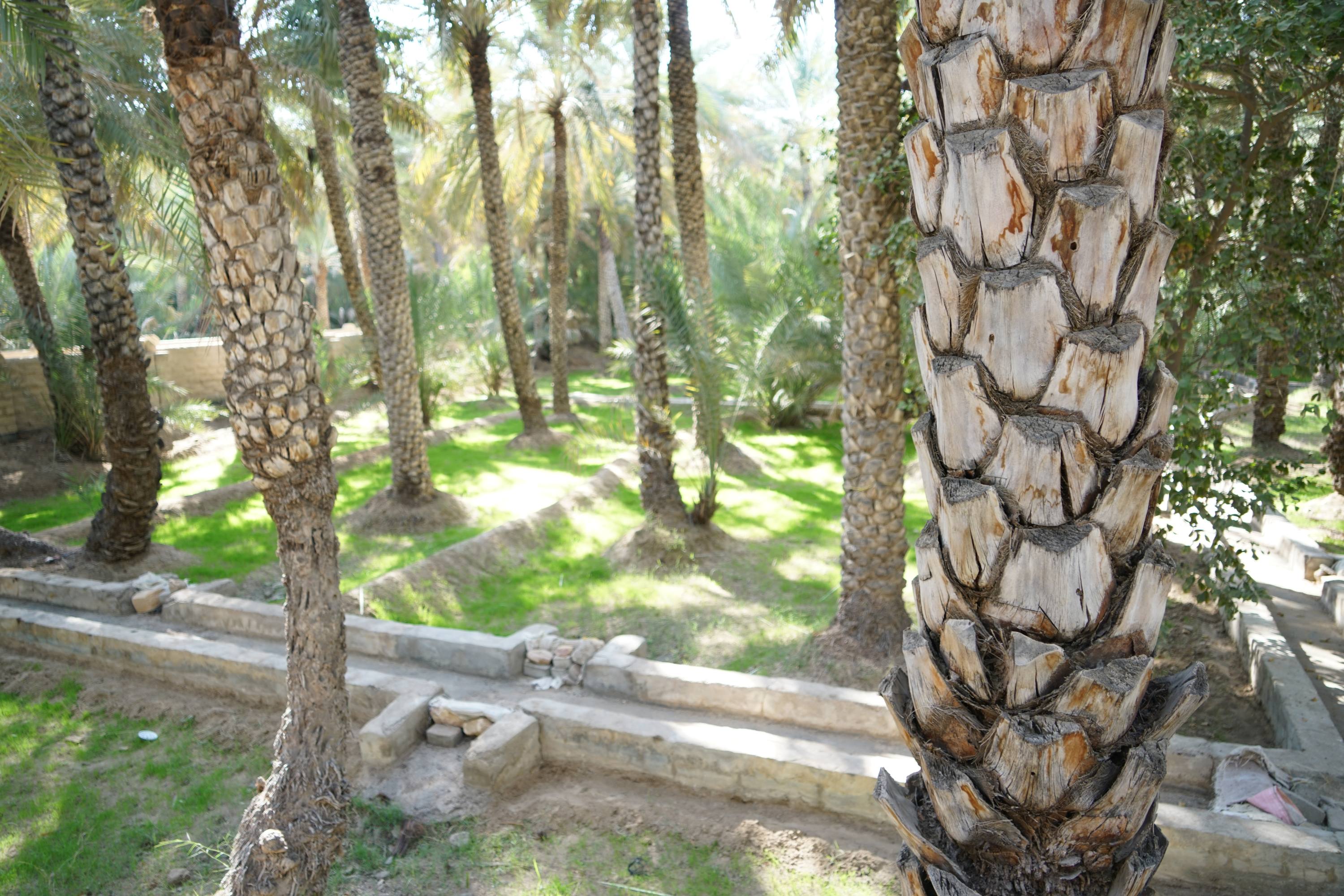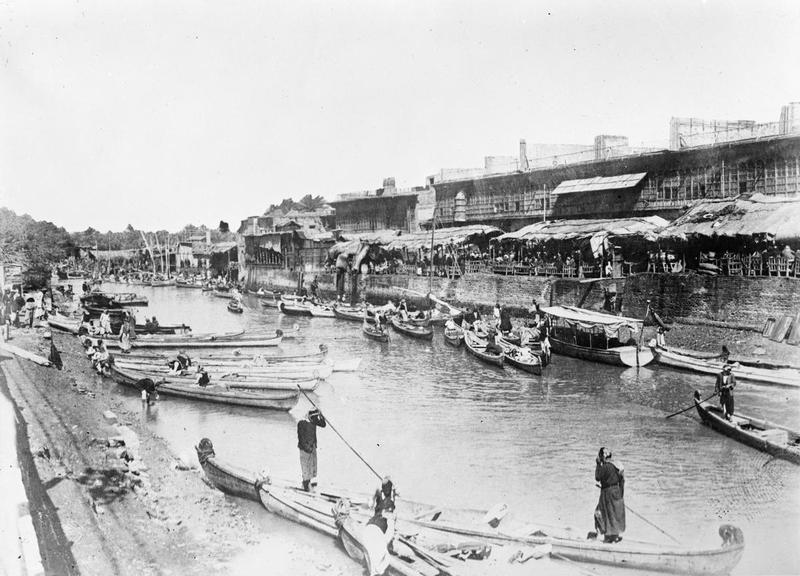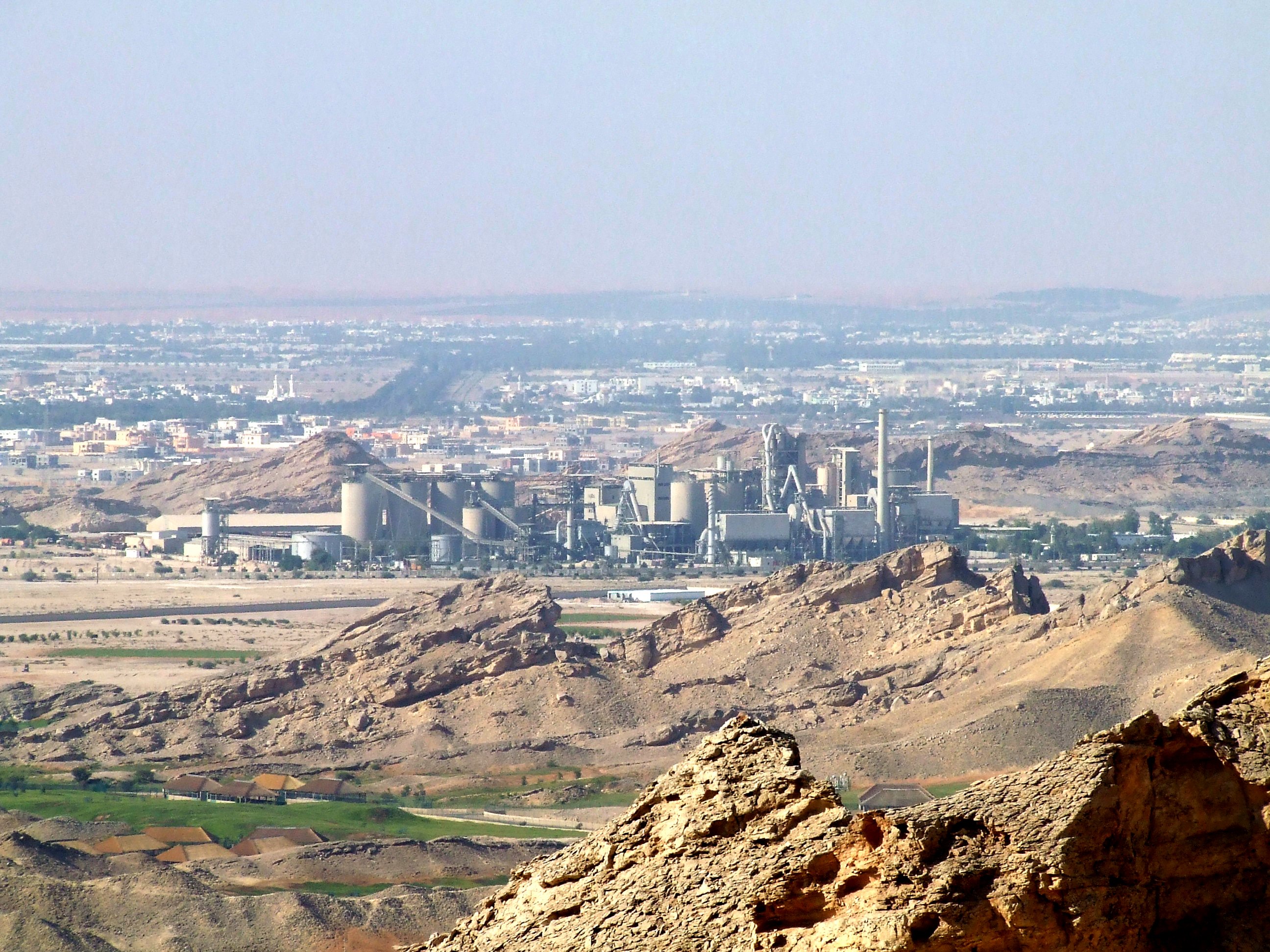|
Wajihids
The Wajihids () were an Arab dynasty that ruled in coastal Oman in the early and mid-10th century AD. Their capital was the town of Suhar, after moving there from Al-Buraimi Oasis or Tawam, where they had been in the 9th century. History The origins and history of this dynasty are obscure. They may have been of either Omani or Bahraini origin, and they were possibly related to Ahmad ibn Hilal, a previous governor of Oman on behalf of the Abbasid Caliphate.Wilkinson, p. 333; al-Salimi, pp. 375-6. Miles, pp. 102-3, offered a different theory about the Wajihids, stating that Yusuf b. Wajih was a Turkish officer who was sent to Oman on behalf of the Abbasid government; this idea has not been adopted by more recent historians In any event, by about 929,Wilkinson, p. 333 the coastal regions of Oman were under the control of Yūsuf ibn Wajīh (), the first member of the dynasty. According to the archaeologist Timothy Power, the origins of the Wajihids can be found in an account by ... [...More Info...] [...Related Items...] OR: [Wikipedia] [Google] [Baidu] |
Al Buraimi Governorate
Al Buraimi Governorate () is one of the 11 governorates of Oman. The area was part of Ad Dhahirah Region until October 2006, when a new governorate was created from the wilayats (provinces) of Al Buraymi and Mahdah. A third wilayat, As- Sunaynah, was created from parts of the two. Dr. Hamad bin Ahmed Al Busaidi has been governor since 2020. The town of Al-Buraimi is an oasis town in northwestern Oman, on the border of the United Arab Emirates. Al Ain is an adjacent city on the UAE side of the border. Both settlements are part of the historical region of Tawam or Al-Buraimi Oasis. For many decades, there had been an open border between Al-Buraimi located in Oman and Al-Ain. In September 2006, this border was relocated to an area near Hilli which is around from the traditional open border. The traditional border near Al-Ain City is now closed to all except to those with valid visas ( GCC nationals require no visa). Climate Al Buraimi has a hot desert climate (Köppen clim ... [...More Info...] [...Related Items...] OR: [Wikipedia] [Google] [Baidu] |
Suhar
Sohar () is the capital and largest city of the Al Batinah North Governorate in Oman. An ancient capital of the country that once served as an important Islamic port town on the Gulf of Oman, Sohar has also been credited as the mythical birthplace of Sinbad the Sailor. It was historically known as Mazūn (). At the 2010 census, Sohar's population was 140,006, making it Oman's fifth most-populated settlement. Described as an industrial town, the development of the Sohar Industrial Port during the 2000s has transformed it into a major Omani industrial hub. History As the largest town in the region, it has been argued that Sohar is to be identified with the ancient town called 'Omanah' () mentioned by Pliny the Elder in his ''Natural History''. This settlement is believed to have given Oman its name. According to Al-Tabari, in 893 or 894 C.E., during the Abbasid era, there was a dispute about who should rule Oman amongst local factions. A faction that approached the Abbas ... [...More Info...] [...Related Items...] OR: [Wikipedia] [Google] [Baidu] |
Nizwa
Nizwa () is the largest city in Ad Dakhiliyah Region in Oman and was the capital of Imamate of Oman, Oman proper. Nizwa is about (1.5 hour drive) from the Omani capital Muscat. The population is estimated at around 83,544 people. Nizwa is one of the oldest cities in Oman, and was once a center of trade, religion, education and art. Its Jama (grand mosque) was formerly a center for Islamic learning. Nizwa acquired its importance because it has been an important meeting point at the base of the Western Hajar Mountains. Set amid a verdant spread of date palms, it is strategically located at the crossroads of routes linking the interior with Muscat and the lower reaches of Dhofar Governorate, Dhofar, thus serving as the link for a large part of the country. Today, Nizwa is a diverse prosperous place with numerous agricultural, historical and recreational aspects. Nizwa is a center for date palm, date growing and is the market town, market place for the area. Etymology Historia ... [...More Info...] [...Related Items...] OR: [Wikipedia] [Google] [Baidu] |
Tawam (region)
Tawam (), also Tuwwam, or Tu'am, is a historical oasis region in Eastern Arabia that stretched from, or was located between, the Western Hajar Mountains to the Persian Gulf coast, nowadays forming parts of the United Arab Emirates and western Oman. Although associated with the Buraimi Oasis (), by historians working from documentary sources available in the 1950s and 60s, Tu'am is now thought to refer to the Christian patriachate of St Thomas the Apostle of the East and the location of the principal city and pearling centre on Siniyah island in modern Umm Al Quwain on the Western seaboard of the UAE. It is marked by the twin settlements of Al Ain and Al-Buraimi on the UAE-Omani border, with the former in the UAE and the latter in Oman, and with Siniyah on the Western seaboard of the UAE. Etymology and geography Al-Ain is the main settlement in the Eastern Region of the Emirate of Abu Dhabi, located on the country's eastern border with Oman, where the adjacent town of ... [...More Info...] [...Related Items...] OR: [Wikipedia] [Google] [Baidu] |
Sohar
Sohar () is the capital and largest city of the Al Batinah North Governorate in Oman. An ancient capital of the country that once served as an important Islamic port town on the Gulf of Oman, Sohar has also been credited as the mythical birthplace of Sinbad the Sailor. It was historically known as Mazūn (). At the 2010 census, Sohar's population was 140,006, making it Oman's fifth most-populated settlement. Described as an industrial town, the development of the Sohar Industrial Port during the 2000s has transformed it into a major Omani industrial hub. History As the largest town in the region, it has been argued that Sohar is to be identified with the ancient town called 'Omanah' () mentioned by Pliny the Elder in his '' Natural History''. This settlement is believed to have given Oman its name. According to Al-Tabari, in 893 or 894 C.E., during the Abbasid era, there was a dispute about who should rule Oman amongst local factions. A faction that approached the ... [...More Info...] [...Related Items...] OR: [Wikipedia] [Google] [Baidu] |
Al-Ubullah
Al-Ubulla (), called Apologou () by the Greeks in the pre-Islamic period, was a port city at the head of the Persian Gulf east of Basra in present-day Iraq. In the medieval period, it served as Iraq's principal commercial port for trade with India. Location Al-Ubulla was situated on the right bank of the Euphrates–Tigris estuary at the opening into the Persian Gulf. It was located to the east of old Basra and lay on the northern side of the eponymous canal, the Nahr al-Ubulla, which connected Basra southeastwards to the Tigris river, Abadan (in modern Iran) and ultimately to the Persian Gulf. The 'Ashar neighborhood of modern Basra currently occupies the site of al-Ubulla. History Al-Ubulla is identified with the ancient city of Apologou mentioned in the Greek manuscript ''Periplus of the Erythraean Sea''. The city dates at least to the Sasanian era (3rd–7th centuries CE), and possibly before. According to the 10th-century chronicler Eutychius of Alexandria, it was founded by ... [...More Info...] [...Related Items...] OR: [Wikipedia] [Google] [Baidu] |
Tigris River
The Tigris ( ; see below) is the eastern of the two great rivers that define Mesopotamia, the other being the Euphrates. The river flows south from the mountains of the Armenian Highlands through the Syrian and Arabian Deserts, before merging with the Euphrates and reaching to the Persian Gulf. The Tigris passes through historical cities like Mosul, Tikrit, Samarra, and Baghdad. It is also home to archaeological sites and ancient religious communities, including the Mandaeans, who use it for baptism. In ancient times, the Tigris nurtured the Assyrian Empire, with remnants like the relief of King Tiglath-Pileser. Today, the Tigris faces modern threats from geopolitical instability, dam projects, poor water management, and climate change, leading to concerns about its sustainability. Efforts to protect and preserve the river's legacy are ongoing, with local archaeologists and activists working to safeguard its future. Etymology The Ancient Greek form () is an alternativ ... [...More Info...] [...Related Items...] OR: [Wikipedia] [Google] [Baidu] |
Basra
Basra () is a port city in Iraq, southern Iraq. It is the capital of the eponymous Basra Governorate, as well as the List of largest cities of Iraq, third largest city in Iraq overall, behind Baghdad and Mosul. Located near the Iran–Iraq border at the north-easternmost extent of the Arabian Peninsula, the city is situated along the banks of the Shatt al-Arab that empties into the Persian Gulf. It is consistently one of the hottest cities in Iraq, with summer temperatures regularly exceeding . Built in 636 as a military camp, Basra played an important role as a regional hub of knowledge, trade and commerce during the Islamic Golden Age and is home to the first mosque built outside the Arabian Peninsula. It was a center of the History of slavery, slave trade in Mesopotamia, until the Zanj Rebellion, Zanj rebellion in Battle of Basra (871), 871. Historically, Basra is one of the ports from which the fictional Sinbad the Sailor embarked on his journeys. It has experienced numerou ... [...More Info...] [...Related Items...] OR: [Wikipedia] [Google] [Baidu] |
Al Ain
Al Ain () is a city in the Emirate of Abu Dhabi, United Arab Emirates, and the seat of the administrative division of the Al Ain Region. The city is Oman–United Arab Emirates border, bordered to the east by the Omani town of Al-Buraimi. Al Ain is the largest inland city in the Emirates, the List of cities in the United Arab Emirates, fourth-largest city (after Dubai, Abu Dhabi, and Sharjah), and the second-largest in the Emirate of Abu Dhabi. The Controlled-access highway, freeways connecting Al Ain, Abu Dhabi, and Dubai form a geographic triangle in the country, each city being roughly from the others. Climate and geography Al Ain is known as the "Garden City" () of Abu Dhabi, the UAE or the Persian Gulf, Gulf, due to its greenery, particularly with regard to the city's oases, parks, tree-lined avenues and decorative roundabouts, with strict height controls on new buildings, to no more than seven floors. According to one author, the oases around Al Ain and Al-Ahsa Oasis, ... [...More Info...] [...Related Items...] OR: [Wikipedia] [Google] [Baidu] |
Persian Gulf
The Persian Gulf, sometimes called the Arabian Gulf, is a Mediterranean seas, mediterranean sea in West Asia. The body of water is an extension of the Arabian Sea and the larger Indian Ocean located between Iran and the Arabian Peninsula.United Nations Group of Experts on Geographical NameWorking Paper No. 61, 23rd Session, Vienna, 28 March – 4 April 2006. accessed 9 October 2010 It is connected to the Gulf of Oman in the east by the Strait of Hormuz. The river delta of the Shatt al-Arab forms the northwest shoreline. The Persian Gulf has many fishing grounds, extensive reefs (mostly rocky, but also Coral reef, coral), and abundant pearl oysters, however its ecology has been damaged by industrialization and oil spills. The Persian Gulf is in the Persian Gulf Basin, which is of Cenozoic origin and related to the subduction of the Arabian plate under the Zagros Mountains. The current flooding of the basin started 15,000 years ago due to sea level rise, rising sea levels of ... [...More Info...] [...Related Items...] OR: [Wikipedia] [Google] [Baidu] |
Gulf Of Oman
The Gulf of Oman or Sea of Oman ( ''khalīj ʿumān''; ''daryâ-ye omân''), also known as Gulf of Makran or Sea of Makran ( ''khalīj makrān''; ''daryâ-ye makrān''), is a gulf in the Indian Ocean that connects the Arabian Sea with the Strait of Hormuz, which then runs to the Persian Gulf. It borders Iran and Pakistan on the north, Oman on the south, and the United Arab Emirates on the west. Extent The International Hydrographic Organization defines the limits of the Gulf of Oman as follows: Exclusive economic zone Exclusive economic zones in Gulf of Oman: Bordering countries Coastline length of bordering countries: # - 850 km coastline # - 750 km coastline # - 50 km coastline # - 50 km coastline Alternative names The Gulf of Oman historically and geographically has been referred to by different names by Arabian, Iranian, Indian, Pakistani, and European geographers and travelers, including Makran Sea and Akhzar Sea. # Makran Sea # A ... [...More Info...] [...Related Items...] OR: [Wikipedia] [Google] [Baidu] |







